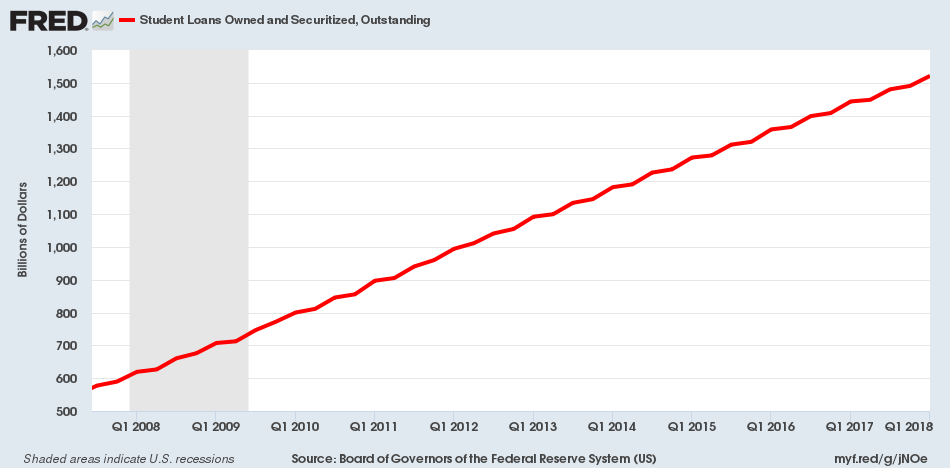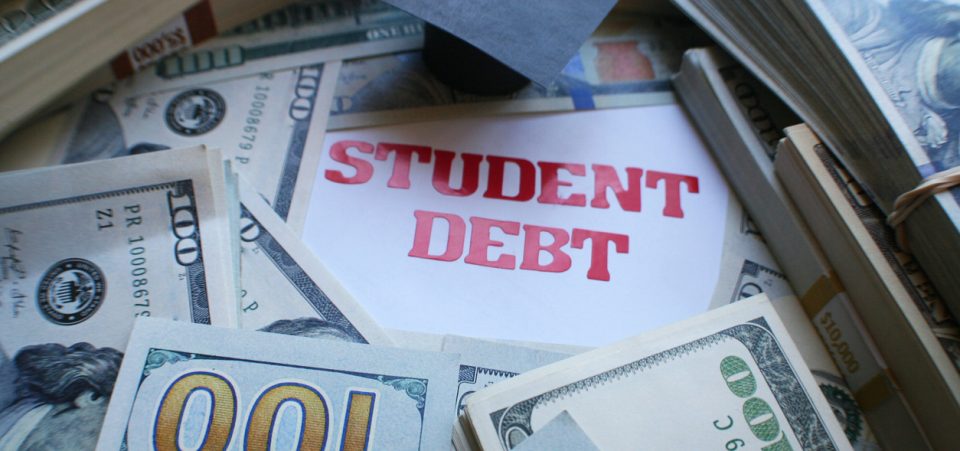Don’t Take Surging Student Debt Lightly
Look out for student debt in the U.S. economy; it could create a lot of problems ahead. American taxpayers, you could be on the hook for it.
Just recently, the Federal Reserve reported that student debt has hit a new milestone: $1.5 trillion in the first quarter of 2018. This is nothing good, and don’t for a second take this lightly.
You can look at the chart below to get some perspective.
In the first quarter of 2008, student debt stood at $619.0 billion.
So, over the past decade, in monetary terms, student debt has increased by $901.0 billion. In percentage terms, student debt has increased by roughly 146%.
With a U.S. population of around 326 million, this means that, for every one American, there’s student debt of $4,663.

(Source: “Student Loans Owned and Securitized, Outstanding,” Federal Reserve Bank of St. Louis, last accessed May 11, 2018.)
Breaking the student debt figures down further…
A typical graduate has an average $37,172 in student loans to pay at the time of graduation. Over the last 13 years, this figure has increased by $20,000. (Source: “Here’s how much the average student loan borrower owes when they graduate,” CNBC, February 5, 2018.)
Know this as well: over 44 million Americans actually own this $1.5 trillion of student debt. That’s one in four American adults.
So What if the Student Debt Surges?
Looking at the student debt figures, one could say, “Who cares? It’s not my problem.”
Only if it were this easy…
Understand that a lot of these student loans are backed by the U.S. government.
Over the past few years, the U.S. government has issued a lot of these student loans. It has been so active that even the banks are pulling out from the student lending business.
For instance, in early 2017, JPMorgan Chase & Co. (NYSE:JPM) sold its student loan portfolio. In 2013, the bank said it would be pulling back from the student loan business. (Source: “JPMorgan to Sell $6.9 Billion of Student Loans to Navient,” Bloomberg, April 18, 2017.)
Here’s the worst part: the default rates on student loans have been increasing.
At the end of 2017, roughly 11% of all student loans were more than 90 days delinquent. In the first quarter of 2008, just 7.4% of all student loans were more than 90 days delinquent. (Source: “Household Debt And Credit Report,” Federal Reserve Bank of New York, last accessed May 10, 2018.)
If you do the math, as student debt jumped 146%, the more-than-90-days delinquency rate increased by close to 50%!
Looking all this, it has to be asked: “What happens if the delinquency rates on student debt continue to soar?”
Dear reader, don’t get too comfortable with rising student debt and delinquency rates.
The fact is, the U.S. government backs a lot of these loans. So, as delinquency rates increase, the U.S. government and—ultimately—U.S. taxpayers are on the hook for it. Student debt could be something that sends the U.S. national debt soaring in no time.
Remember, if the national debt goes up, it hurts the U.S. dollar.






